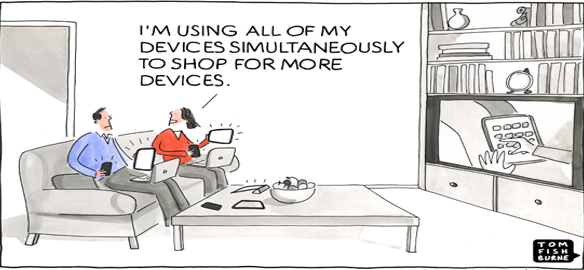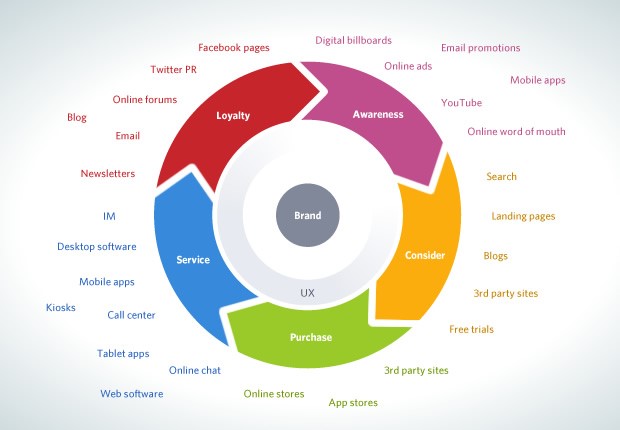





The mantra is to engage with the Users…..in real-time and seamlessly….no matter what device they switch to.
We are living in a Connected world, an IoT world, with smart phones, cars, TVs, smart accessories, smart homes, smart cities.


The growing usage and the increasing number of connected devices calls for re-jigging the digital marketing practices to reach out to this multi-device-wielding consumer. Cross device user targeting allows marketers to better understand when and how customers use their different devices and then be there at the right time with the right message.
Let’s take a step into the world of Cross Device advertising.
What are connected devices?

Who is a Cross Device consumer?

A typical cross device consumer browses for things on the smart phone, but buys them on his laptop; has his phone, smart watch and car connected to the garage door, lock, lights and AC; he exercises on smart machines which are connected to his Fit bit and to his music player.

That’s a Cross Device user!
What ties multiple devices, cross device users and advertising together?
Data, specifically consumer data! As users increasingly log on to different devices, large amounts of data is generated in real-time, with vital information like, interests, demographics, frequency, IP addresses, locations time stamps, device OS, screen size, etc. This now called Data Currency (accurate, good quality and credible), captured and used by Data Management Platforms (DMPs) to create and manage user-id linkages and user profiles across devices.

Cross device programmatic marketing platforms centralize these user profiles from all devices giving marketers real time actionable data (device traffic, user data, etc) for targeting users, tracking user journeys, and delivering effective and relevant content-driven customer experiences through the user cycle (awareness to conversion to re-targeting) irrespective of the device being used.
All devices do not have the same level of user interaction and in order to reduce advertising waste (e.g. device overlap) and increase optimized high performance, companies must have in place cross-device measurement tools that can accurately identify a consumer/device and give a detailed picture of a user’s shopping journey.
How and why are cross device campaigns applied effectively through the user cycle/journey?
Why? Because a good cross device engagement helps the outreach to focus on the most effective or high-traffic path to the consumer at the pertinent stage of the consumer cycle with the goal being, a completed purchase.
How? The figure shows a typical user cycle with the various touchpoints of every stage. Now imagine the number of times and devices that a user switches throughout this process….how does a marketer know which device works best for which consumer for retargeting and which device does this particular user convert on normally? Read on to get an idea……


User Journey Mapping – Mapping a user’s complex multi-device shopping journey, in real-time, using cross-device segmentation solutions. Identifying and applying these mapped patterns in targeting and retargeting through sequential messaging (changing/sequential ads e.g. story sequences, user-activity based, stage-of user-journey based, etc) pushes sales.
The Golden Rule – The Consumer Remains the Same, just the Device Changes

An effective cross-device strategy helps marketers adopt the most logical and coordinated advertising mix that delivers the best possible experience for the consumer. It takes the user faster through the engagement funnel towards conversion and loyalty, which in turn drives phenomenal performance from the ad spend.
You ask “Who does it best?”
Digital Infusion, a pioneer in the Indian programmatic advertising-tech landscape, uses Moment scoring, syndicated from Rocketfuel, to explode the channel-silos and evaluate key engagement moments (not restricted to device-scoring). This is a revolutionary cross-device measurement technology that delivers the best media-mix and higher conversions (up by 32%, according to Vic Farla, Toshiba Initiative).
The dynamic insights from Moment-scoring-based Predictive Marketing allow campaigns to be almost 50% more accurate, propelling conversions and ROI upwards like never before.


Write to us for a free consultation